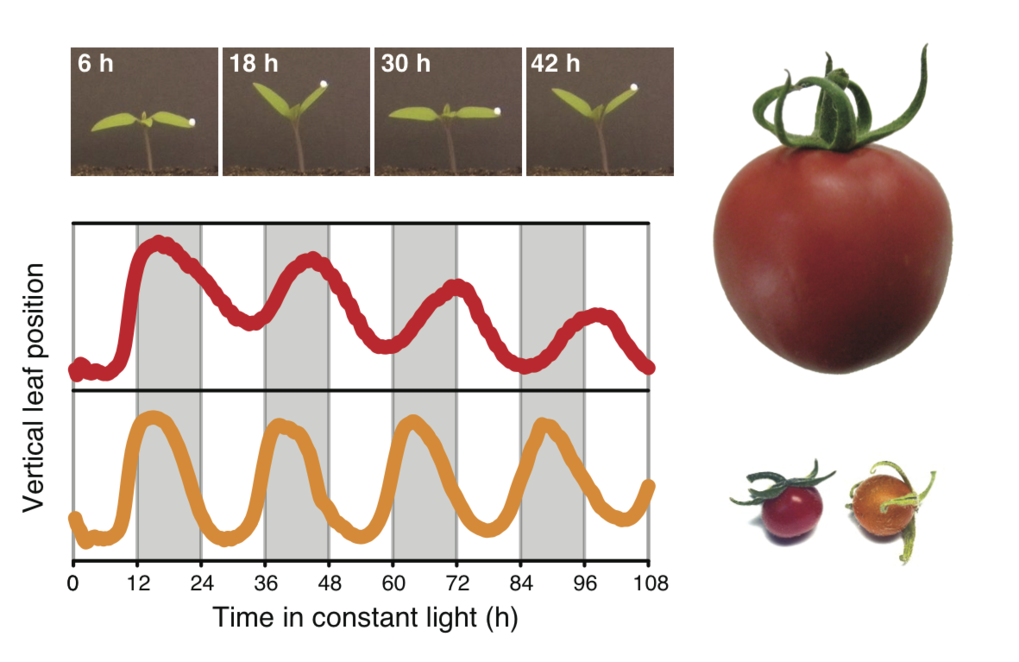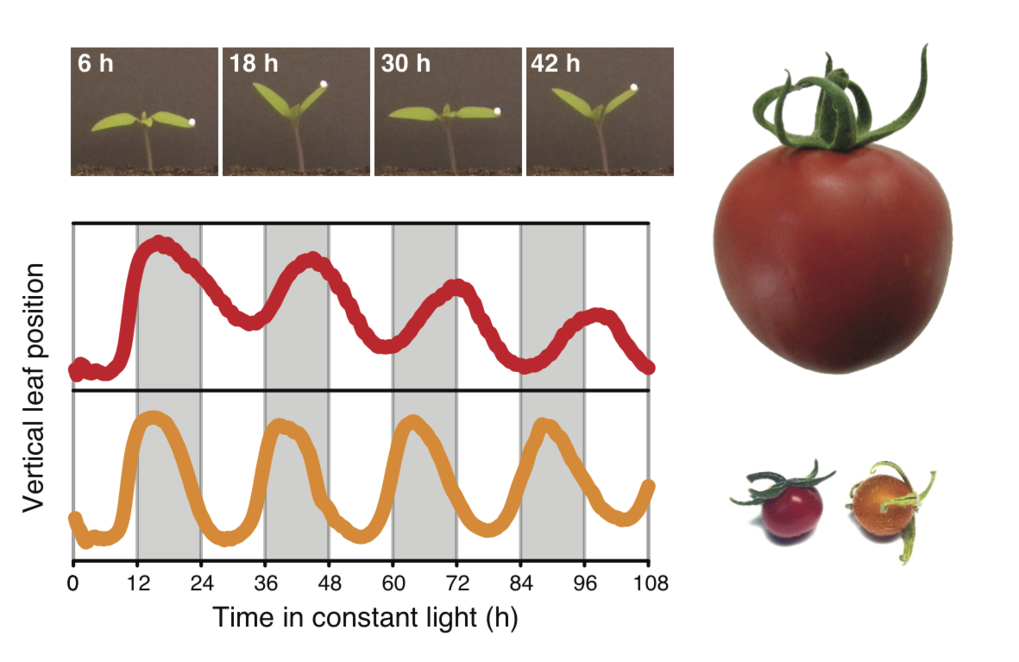Tomato domestication decelerated the circadian clock
Wild and domesticated varieties of tomato have a different circadian rhythm
All organisms, from bacteria to humans, exhibit endogenous rhythms controlled by the circadian clock. These rhythms are important for synchronization with the environment. Scientists at the Max Planck Institute for Plant Breeding Research in Cologne were able to show that the circadian clock of the cultivated tomato slowed during domestication. This deceleration is likely an adaptation to the long summer days that the cultivated species encountered as it was carried away from the equator.

The circadian clock confers an adaptive advantage by allowing temporal coordination of physiological, behavioral and developmental processes with the external light/dark cycle. Anyone who has traveled across time zones knows what happens when the internal clock is not synchronized with the external environment – jetlag. Related to this, it has been shown for different organisms that naturally occurring variation in circadian rhythms is important for correctly tuning the clock to the local surroundings. Scientists at the Max Planck Institute for Plant Breeding Research in Cologne have now found that modulation of the circadian clock also played a role during tomato domestication.
Tomato domestication started in Ecuador, where diverse wild tomato species can still be found along the Andes Mountains. They grow as weeds, often under extreme conditions, from sea level to altitudes over 3000 m and differ substantially from the cultivated varieties. Still, all the wild species can be crossed with the cultivated tomato, thus providing a rich source of valuable traits such as disease resistances that can be used for tomato breeding. Additionally, the wild species enable genetic studies on traits that were important for domestication.
By comparing circadian rhythms of 34 cultivated tomato varieties and 68 wild strains, researchers led by Jose M. Jiménez-Gómez and Niels A. Müller were able to show that the circadian clock runs more slowly in cultivated tomato than in its wild relatives. “Gene variants responsible for the altered circadian rhythm must have arisen during domestication,” says Jiménez-Gómez. By performing genetic analyses, the researchers found that deceleration of the circadian clock was achieved by mutations in only two genes, one of which is EID1, a gene involved in how plants react to light. The scientists pinpointed the causal variant to a single amino acid of EID1.
Moreover, the researchers detected signatures of positive selection for the genomic region of EID1. “This indicates that the delayed circadian rhythm was positively selected by humans and is beneficial for the cultivated tomato,” Jiménez-Gómez explains. “We think that the decelerated clock represents an adaptation to the long summer days that the cultivated species encountered after being moved away from the equator.” As the tomato was carried from Ecuador to Mesoamerica and finally to Europe during domestication, it crossed several latitudinal lines, leading to exposure to very long days. In Naples (Italy), for example, summer days are more than three hours longer than in Ecuador.
The tomato is not an exception. Many crop plants have experienced drastic range extensions during domestication and breeding. It will be interesting to study whether migrations of that kind were also associated with changes in the internal clock. Analysis of circadian rhythms in different crop plants may provide new opportunities for crop improvement.
